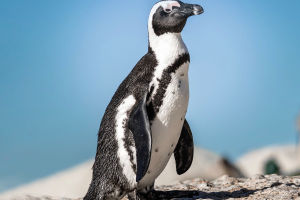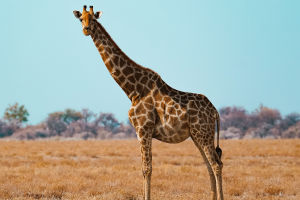Hey, Lykkers! As we dive into the fascinating world of the Springbok, we can’t help but feel excited about all the unique aspects of this remarkable creature.
From its incredible agility to its vital role in South Africa's ecosystem, there's so much to uncover.
Let’s explore some of the most interesting discoveries we’ve made about the Springbok!
What is a Springbok?
The Springbok (Antidorcas marsupialis) is a medium-sized antelope native to southern Africa. Characterized by its distinctive markings and graceful build, it stands about 75-100 cm tall at the shoulder. Its name comes from the Afrikaans words for “spring” and “buck,” aptly describing its remarkable leaping ability. These agile animals can jump up to 3 meters high and cover distances of up to 10 meters in a single bound!
Adaptations and Behavior
One of the most striking features of the Springbok is its unique pronking behavior. When threatened or excited, these antelopes perform a series of high jumps in the air, showcasing their strength and agility. This behavior not only helps to confuse predators but also signals to other Springboks that danger is near. Isn’t it amazing how such a simple act can serve multiple purposes in the animal kingdom?
Springboks are also well-adapted to their arid habitats. They can go long periods without drinking water, obtaining necessary hydration from the vegetation they consume. Their ability to thrive in harsh environments is a testament to their resilience and evolutionary adaptations.
Social Structure
In terms of social behavior, Springboks exhibit a fascinating herding dynamic. They typically form groups known as "herds," which can range from a few individuals to several hundred. During the breeding season, males will engage in displays of dominance to attract females. These displays often involve intricate movements and vocalizations that highlight their strength and fitness.
Interestingly, Springboks are known for their strong social bonds. They often engage in grooming behaviors, which help to reinforce relationships within the herd. This social structure is essential for their survival, as it allows them to work together to spot predators and protect their young.
Conservation Status
The conservation status of the Springbok is currently stable, thanks to various protective measures in place across their range. While they face threats from habitat loss and poaching, conservation efforts have helped to maintain healthy populations. Initiatives focusing on habitat preservation and sustainable land use practices are crucial to ensuring that these iconic animals continue to thrive in their natural environment.
Springbok in Culture
Beyond their ecological importance, Springboks hold a special place in South African culture. They are a national symbol and are prominently featured in sports, particularly rugby, where the Springbok emblem represents the national team. This cultural significance adds an extra layer of appreciation for these remarkable creatures, connecting them to the identity and pride of the nation.
As we wrap up our exploration of the Springbok, it’s clear that these antelopes are more than just beautiful animals; they are vital components of their ecosystem and cultural symbols for their homeland. We hope you’ve enjoyed discovering these intriguing aspects of the Springbok with us!
Whether it’s their incredible leaping abilities or their social structures, there’s always something new to learn about these fascinating creatures. Let’s continue to celebrate and protect them together!


